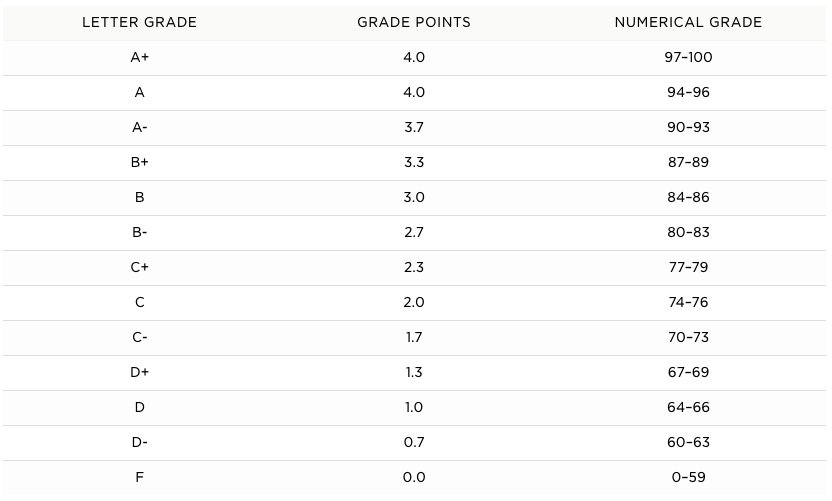The Select Few: Northwestern Acceptance Rate Up to 7.5%
Read now/f/64062/2608x869/73fc9bf5cf/northwestern.jpg)
/f/64062/1920x800/6f0ddbdbc1/blog-header-ncea-to-gpa-calculator-blog-crimson-education.jpg)
If you are a New Zealand student interested in walking the halls of Harvard or the yards of Yale or the science labs of Stanford — then learning about how you can use your NCEA results to apply to top US universities is an important part of your successful application journey.
The good news is that the admissions officers at top US schools are aware of the various curricula offered by countries around the globe, including New Zealand’s NCEA.
That said, being able to convert your score to a more globally familiar GPA (or Grade Point Average) is important — as you will be asked to report your GPA (along with your school grades) on your applications.
Before we dive into the conversion methods, let’s take a quick look into NCEA.
The National Certificate of Educational Achievement (NCEA) is the secondary curriculum designed and implemented nationally in New Zealand. It covers three years of high school (years 11, 12 and 13), over which you will typically sit six subjects in Level 1, six in Level 2 and five in Level 3.
As you go through various internal and external assessments, you’ll receive credits for each subject according to your performance. The grading system is divided into four categories. Luckily, there is an easy way to remember them using the acronym ‘NAME’. The category letters have the following meanings (from lowest to highest):
Each internal and external assessment is designated a number of “credits” based on the work involved. Each assessment is then graded within the NAME system, resulting in a number of credits at each level: Achieved, Merit, and Excellence.
As the image from NZQA portal shows:
In the case below, the student received 21 credits: 7 credits with merit and 14 credits with excellence.
Then, all the credits from all subjects will be added together, generating a total for all credits from each year. In the example below, the student received:
Level 1: 9 credits achieved, 24 credits merit, 104 credits excellence
Level 2: 9 credits achieved, 34 credits merit, 94 credits excellence
Level 3: 4 credits achieved, 24 credits merit, 84 credits excellence
**
Total credits: 22 credits achieved, 82 credits merit, 282 credits excellence**
This of course makes for a very nuanced curriculum that’s unique to New Zealand. So how does it compare to the US system where a Grade Point Average (GPA) acts as a numerical summary of all your accumulated grades?
To answer this question, we can start by explaining what a GPA is and exactly how it is calculated.
In the US, most schools use a letter grading system, with a corresponding letter grade, for example an A or B or C. This is measured by a number called a Grade Point Average, or GPA. Your GPA, which is measured on a scale from 0 to 4.0, is the cumulative average of the grades in all of your subjects and is calculated by dividing the total amount of grade points earned by the total amount of credit hours attempted.
Here’s a simple chart that shows how US students convert their letter grades to the 4.0 scale.

An unweighted GPA is the average of all your grades on the scale shown in the table above. However, some US schools use a ‘weighted’ GPA scale, which gives more ‘weight’ or points to grades in more difficult or accelerated courses like an ‘Honors’ class or a more difficult AP course. So, while an ‘A’ might normally be a 4.0 on the unweighted scale, on a weighted scale, an ‘A’ may be a 5.0.
Different people may have different answers to this question depending on their academic and US uni goals. Generally speaking, a good GPA is over 3.5 and — if you are aiming at top US universities — ideally over 3.7. Below is a table showing the average GPA of students admitted to the top 30 US unis. Remember, this is an average; so there are students who are admitted with GPAs slightly above or below this median.
| University | Average Unweighted GPA |
|---|---|
| Princeton University | 3.97 |
| Harvard University | 3.97 |
| Columbia University | 3.9 |
| Massachusetts Institute of Techology | 3.95 |
| Yale University | 3.95 |
| Stanford University | 3.96 |
| University of Chicago | 3.85 |
| University of Pennsylvania | 3.9 |
| California Institute of Technology | 3.97 |
| Johns Hopkins University | 3.74 |
| Northwestern University | 3.92 |
| Duke University | 3.94 |
| Dartmouth College | 3.9 |
| Brown University | 3.94 |
| Vanderbilt University | 3.76 |
| Rice University | 3.89 |
| Washington University in St. Louis | 3.89 |
| Cornell University | 3.9 |
| University of Notre Dame | 3.9 |
| University of California - Los Angeles | 3.89 |
| Emory University | 3.78 |
| University of California - Berkeley | 3.86 |
| Georgetown University | 3.89 |
| University of Michigan - Ann Arbor | 3.82 |
| University of Southern California | 3.79 |
| Carnegie Mellon University | 3.69 |
| University of Virginia | 3.69 |
| University of North Carolina - Chapel Hill | 3.65 |
| Wake Forest University | 3.65 |
| New York University | 3.69 |
In short, yes!
International curricula such as the International Baccalaureate (IB) or A Levels are widely recognised; therefore, they are theoretically easier curricula for US universities to evaluate and compare. However, admissions officers in the US are aware of the various global curricula applicants take and will understand the NCEA and the nuances around it — but it is not seen as rigorous by comparison.
That said, it’s important to remember that admissions officers from top US unis receive an enormous amount of applications. For example, in the latest admissions cycle, Harvard received 57,435 applications for only 1968 places!
Reporting a GPA that is calculated from your NCEA grades therefore acts as a relevant reference point for admissions officers across the board enabling them to “translate” your results in a more commonly applied format.
To summarise, while US Universities accept NCEA and welcome applicants from New Zealand who study this curriculum, it is very helpful to present your grades in a 4.0 GPA scale alongside your NCEA reporting.
Ready to calculate your GPA using your NCEA (or predicted NCEA) grades?
